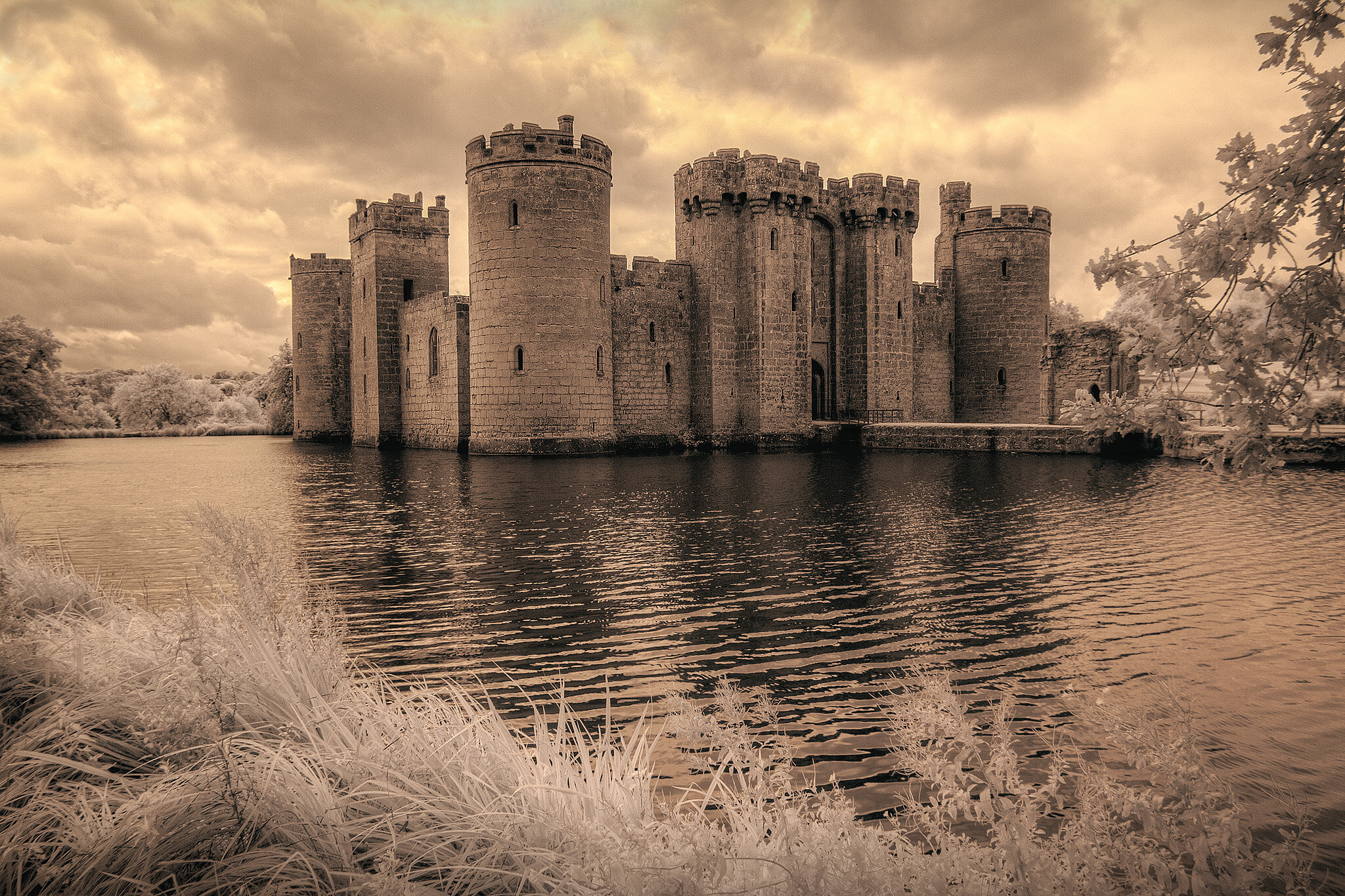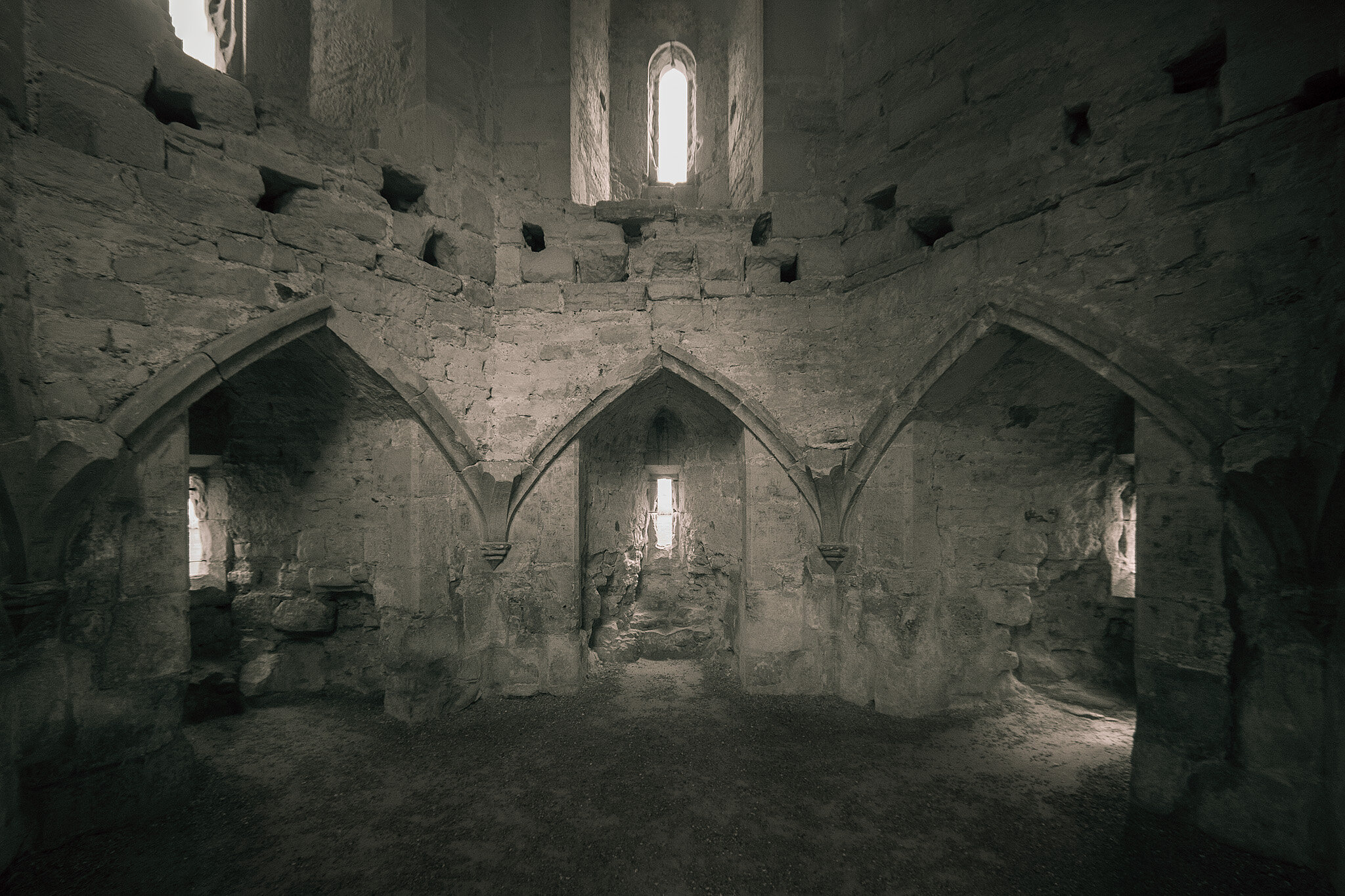Bodiam Castle, South East England





Bodiam Castle was built during the Hundred Years War, between England and France. In 1337, Edward III of England, laid claim to the French Crown. He did not do this without reason. His mother was Isabel, the sister of the last three Valois Kings of France, and his mother would have been next in line to the throne, if you accept the female line, that is. Instead, the Crown of France went to a cousin, who became Philip VI of France. This started a war which went on for one hundred and sixteen years. Described in the contemporary Chronicles of Froissart, it is stated that “French and English lords, speaking the same dialect of Anglo-Norman French, fought one another with honour and civility; while their subjects were butchered unmercifully.’
During the Hundred Years War, the French began raiding the southern coast of England and attacked the towns of Portsmouth, Southampton, Dover, Folkestone, Rye and Winchelsea, amongst others. The French however, felt they were being attacked unmercifully and without reason, when King Edward III invaded Normandy and marched on Paris, leaving a trail of destruction in his wake. On the battlefield of Crecy, the King’s longbowmen defeated a much larger force of French cavalry under Philip VI, before moving on to blockade Calais, which King Edward captured after almost a year’s siege, in 1347. At the Battle of Poitiers, King Edward’s son, the Black Prince, fought King Philip VI's son, the now King John II of France, who was forced to surrender.
Edward III of England, held King John II of France in captivity, and used him to bargain in the negotiation of a truce, at Bretigny in 1360. The terms of the treaty, agreed that Edward would renounce the claim to the Crown of France, while retaining Aquitaine, Calais and other provinces, and in return he would free King John for a substantial ransom. The trouble was that King Edward was unable to evacuate the English forces from France, or to prevent them from continuing their reign of slaughter and pillage on the French. These were not feudal soldiers, these were free companies- private mercenary armies- who, while technically under the control of the King, were enriching themselves through plunder, and had no desire to cease in their activity.
One of these raiders was Sir Robert Knollys, whose shield is carved in relief on the Postern Gate at Bodiam, and the peasants of the Loire valley are said to have thrown themselves into the river in dread, at the mere mention of Knollys’ name. The charred towns through which his forces passed, were knowns as ‘Knollys’ mitres’. In 1358, Knollys is thought to have made 100,000 gold crowns. One of Knollys loyal followers was a young Knight, named Sir Edward Dalyngrigge. Dalyngrigge followed Knollys to France in search of search of wealth, and he seems to have found it. Dalyngrigge built for himself the castle at Bodiam, but we should never forget how he acquired the funds to do so.
It is in this background of the Hundred Years War, that Bodiam Castle was built. Bodiam was one of the last, true, English castles to be built. With its massive towers and broad moat, it really does appear the very epitome of the perfect medieval castle. It was constructed at a time when comfort was also desirable, and Bodiam Castle is the perfect compromise between defence and comfort. We see Bodiam today as it was designed; there are no confusing alterations or additions. Although the interior is a ruin, the exterior is nearly perfect and we might believe that we have truly been transported in time. While Bodiam has all the defence capabilities of a castle, it also had at least 28 fireplaces, and thirty-three privies or garderobes, with drain shafts to the moat.
Sir Edward Dalyngrigge, having made his money plundering his way through France, desired to build himself a castle on his lands in Sussex. He had acquired the land at Bodiam through marriage to Elizabeth Wardeux, who was the heiress to the existing Manor there. The political situation with France, and the fact that England had lost control of the channel in 1372, gave him a justifiable reason to build a castle. In 1385 he was granted a license to crenelated by Richard II, the license still exists and reads as follows:
‘The King to all men to whom etc. greeting. Know that of our special grace we have granted and given license on behalf of ourselves and our heirs, so far as in us lies, to our beloved and faithful Edward Dalyngrigge Knight, that he may strengthen with a wall of stone and lime, and crenellate and may construct and make into a Castle his manor house of Bodyham, near the sea, in the country of Sussex, for the defence of the adjacent country, and the resistance of our enemies, and may hold his aforesaid house so strengthened and crenelated and made into a Castle for himself and his heirs for ever, without let or hindrance of ourselves or our heirs, or of any of our agents whatsoever. In witness of which etc. The King at Westminster 20 October.’
Patent Rolls 1385-9, 42, 123
I always like to point out the hero of the story, and in this case it isn't Dalyngrigge, the builder of the castle, but Lord Curzon who saved it in the early 20th Century. It is said that Curzon was enchanted by the castle from the moment he saw it. He desired to save it, but it was owned by Lord Ashcome, who did not wish to sell. After Ashcombe’s death, Curzon was able to negotiate with Ashcombe's son, and acquired Bodiam Castle and the surrounding lands in 1916. His wife Grace in her autobiography tells us of her first visit:
‘One day in the summer of 1916, George asked me to motor with him to see Bodiam Castle. As we approached the hill leading down to Bodiam village, the chauffeur was told to drive very slowly while George looked for an opening in the hedge. Suddenly he told the chauffeur to stop and we got out; and turning to me he said, “Now give me your hand and climb up this bank, with your eyes closed and don’t open them until I tell you.” He helped me up the bank, and then said “Now, look!” I have that picture in my heart for all time. Looking down on the castle was like looking into another world, I can find no words to describe the beauty. It was a heavenly summer morning, and I felt as I looked at this divinely inspired picture, that I dared not take my eyes off it, for fear that when I looked again it would have disappeared in a mist or a cloud – it could only be a fairy castle.
We drove into the grounds, and spent an hour or more while George, more excited than I had ever seen him before, described all that he hoped to do to restore Bodiam to its original magnificence, so that its beauty might last for ever.‘
Lord Curzon embarked on the restoration of Bodiam with great care and great expense. It is to him that we own its survival. When he died, he left the castle and its lands to the National Trust, in effect, he left it to all of us.

